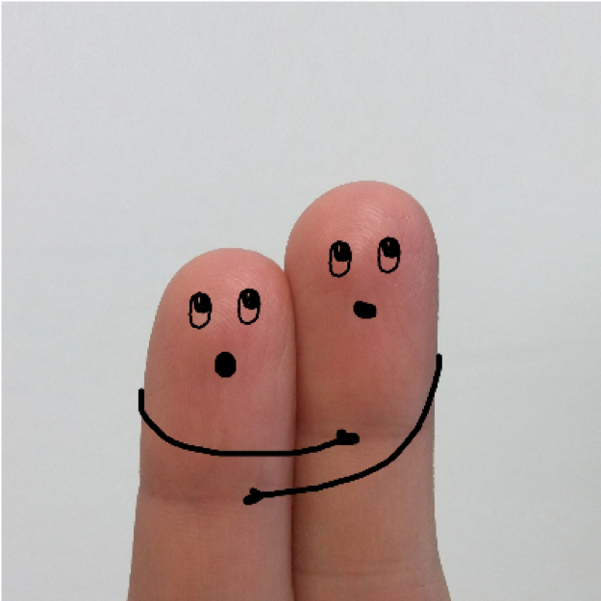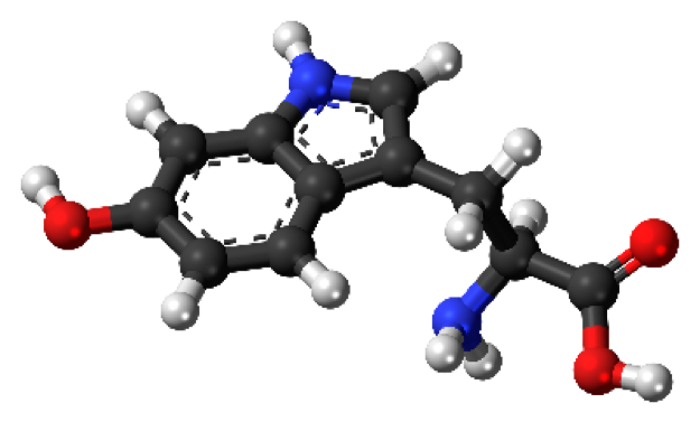
Are anxiety disorders caused by genes from your parents?
April 19, 2018

- Related Topics:
- Complex traits,
- Neurodiversity
A middle school student from WA asks:
"Are anxiety disorders caused by genes from your parents?"
The short answer to your question is “to some extent, yes.” When we think about traits that are determined by our genes, often the first things that come to mind are hair and eye color. But our genes don’t just shape our physical traits: they also influence our emotional ones.
However, the key words in that answer are “to some extent.” Our genes are not the only thing that determines our traits.
In fact, if you had a clone of yourself (or an identical twin) who had the exact same genetic makeup as you, one of you might have an anxiety disorder, but the other might not! This is because your environment matters too.
Anxiety disorders are complex
We sometimes talk about “anxiety” as a single state, but there are actually many different types of anxiety disorders. They include things like panic disorder, which can cause intense panic attacks; specific phobias, like fear of spiders (“arachnophobia”); or generalized anxiety disorder, which causes frequent anxiety about a number of different things.
The genetics of anxiety disorders are complicated. There isn’t a single gene that causes agoraphobia, nor is there one gene that causes arachnophobia. More research needs to be done, but scientists think there are dozens of genes that contribute to anxiety!
Because anxiety disorders are influenced by so many different genes, they are called complex traits.

What does this mean? Well, let’s first consider a simple trait, like blood type. Your blood type depends on which versions of a single gene you get from your parents. If one parent gives you the “A” version, and one parent gives you the “O” version, you will have type A blood. If both parents give you the “O” version of the gene, you will have type O blood.
In contrast, a complex trait is the product of many genes. For each gene related to this trait, the version you have only makes a small impact on the trait.
One example of a complex trait is height. Scientists think that there are almost 700 pieces of DNA that contribute to our height! However, each of those pieces makes only a tiny difference. If each piece made even a 0.1 inch difference, the people who had all the “tall” versions at those points would be almost six feet taller than the people with the “short” versions!
So what does it mean for an anxiety disorder to be a complex trait? Like height, the amount of anxiety that each person feels varies. Different bits of DNA slightly increase or decrease the amount of anxiety a person is likely to feel. These versions are inherited from our parents. If a person inherits enough of the high-anxiety bits of DNA, they might develop a diagnosable anxiety disorder.
Even so, not every bit of DNA will affect anxiety equally. Although lots of genes play a role, some have stronger effects than others. There are specific genes that appear again and again in certain anxiety disorders.
Mutations in a serotonin transporter gene, called SLC6A4, are common in generalized anxiety disorder. Serotonin is an important chemical in our brains. It is involved in eating, sleeping, and memory. Most importantly, it helps us feel good. For this reason, serotonin is sometimes called the “happy chemical.” Mutations in the SLC6A4 gene may reduce the amount of serotonin we have in our brains, which could increase anxiety.
An extra copy of the gene GTF2I is often seen in separation anxiety disorder. GTF2I has the important job of making sure many other genes are active at just the right levels. An extra copy of GTF2I means that a lot of other genes are a little bit off. Perhaps one or more of those genes is important in keeping mood high and anxiety low.

Genes aren’t everything
But even if an anxiety disorder is a complex trait, shouldn’t people who have the same genetic code have the same outcome? Not necessarily! Even identical twins, who have the exact same DNA, might not end up with the same anxiety disorder. It turns out that environment also matters.
Often this is referred to as “nature vs nurture,” but in genetics, the term we use for it is heritability. Heritability refers to how much differences in our DNA contribute to differences in a trait. Higher heritability (up to 100%) means genes have a stronger impact on the trait. Lower heritability means the environment has a stronger impact.
A good example for how environment can shape a trait is specific phobia. Imagine a pair of twins, who share all the same genes. One day after school, one of the twins is chased by a large, angry dog. That twin is more likely to develop a specific phobia for dogs. Since traumatic events can have a strong impact on the development of specific phobias, heritability for many specific phobias is low.
However, heritability is not the same across all anxiety disorders. Agoraphobia has a heritability of about 60%. Panic disorder has a heritability of around 30%. This means genes will have a stronger effect on determining who develops agoraphobia, but environment will have a stronger effect on who develops panic disorder.

“Coming through!”
But what if you know you have a lot of the high-anxiety bits of DNA? Or what if you have an extra copy of GTF2I. Maybe you’ve done some genetic testing and are concerned about your results. Are you definitely going to get an anxiety disorder?
The answer is not necessarily. The link between the mutations you may read about and the disorder is not set in stone. The reason for this is a genetic concept called penetrance. The penetrance of a mutation is the proportion of the time that the people with the mutation have the associated trait.
An example of a mutation with high penetrance is polydactyly. “Polydactyly” comes from the Greek words for “many” and “fingers.” Three out of four people who have this mutation have an extra finger or toe. So the penetrance of this mutation is 75%.
The mutations that are associated with anxiety disorders have low penetrance. This means they do not always produce the disorder. Many other factors influence your risk.
Even if you have one bit of DNA that increases your anxiety risk, you might have another bit of DNA that decreases your risk! Your environment also matters a lot, and it can cause a mutation to have stronger or weaker effects.
Genes do not exist in a vacuum! In the end, your DNA is not your destiny. Even if your parents have anxiety disorders, it’s quite possible you will not.

Author: Robert Coukos
When this answer was published in 2018, Robert was a Ph.D. candidate in the Department of Genetics, studying protein engineering and directed evolution in Alice Ting’s laboratory. He wrote this answer while participating in the Stanford at The Tech program.
 Skip Navigation
Skip Navigation
